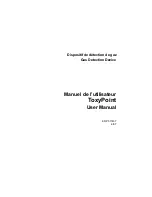
26
27
In order to identify different targets, the Excalibur rates
them along a scale. The conductivity and size of a target
determines where it will appear on the scale.
High-conductivity
targets, for example a US quarter,
Australian $1 coin, 1£ coin or
€
.50 cent will produce a
high pitch signal.
Low-conductivity
targets, for example small alloy coins,
foil, 9ct and fine jewellery, will produce a low pitch
signal.
Pull-tabs, rings, and certain coins will produce an
intermediate pitch depending upon the object’s
conductivity.
The size of objects will have some effect on the
conductivity rating for targets. Generally, the larger the
target, the higher the conductivity rating and the higher
the pitch.
Ferrous
targets contain a large amount of iron (e.g. iron
nails or steel). Generally, ferrous objects are not wanted
so appear on the left side of the scale.
Non-ferrous
targets have little or no iron content, such
as pure gold, silver, copper and bronze. Generally non-
ferrous targets are more valuable so appear on the right
end of the scale.
The Excalibur can operate in two different modes. This
control selects either Disc (Discriminate) or Pinpoint
mode.
Disc (Discriminate)
In Disc mode, the Discriminate control becomes active.
The Discriminate control is used to ignore various ferrous
objects. Typical ferrous objects encountered by treasure
hunters are nails, screws, washers and bits of wire. These
objects are generally not considered to be of value, so it
is a distinct advantage to be able to ignore them while
detecting.
(pg. 28)
Pinpoint
In Pinpoint mode, the detector will produce a sound
on all targets, detecting both ferrous and non-ferrous
targets. In this mode the Discriminate control has no
effect and the Excalibur II will respond with the same
pitch to all types of metal.
(pg. 30)
Disc/Pinpoint
Selecting a Mode
Identifying Targets
�����������
��������������
���������
�������������
����������
�����������������������
������������������������
����
�������
Summary of Contents for Excalibur II
Page 1: ......









































